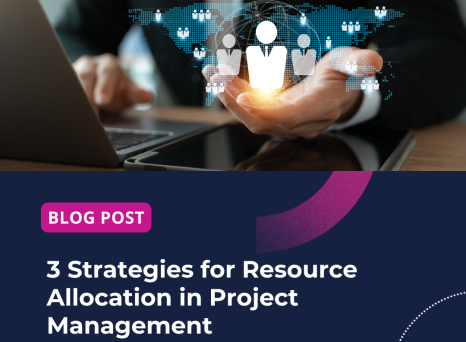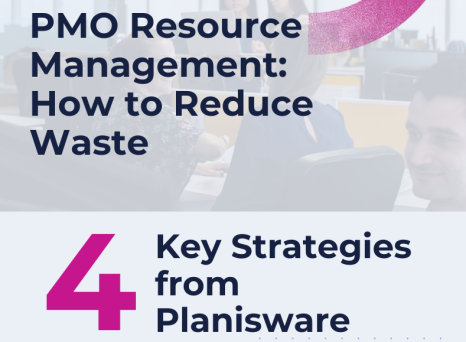
More than 40 million people left their jobs in 2021. While referred to as the “Great Resignation”, this event earned a slew of other names too—the “Great Negotiation” being one. After all, workers didn’t quit altogether. They found jobs with better pay, better benefits, and better company culture.
To ensure you have both the headcount and skillsets to handle your project portfolio, capacity planning for your teams is key. Retaining talent and knowing how best to source those on the lookout for better terms will mean you have the resources you need for your projects.
Look inside and out for opportunities to retain talent
You can take certain measures to better capacity plan. But retention is the first issue that you need to address.
A recent survey found that workers want benefits that have an immediate effect on their life quality. These include policies and solutions that aim to uplift physical, mental, and financial wellbeing.
If you’re not offering these immediate benefits, you may struggle to retain talent and overcome your capacity planning difficulties.
What are your competitors offering? Make sure what you’re giving is at least in line with industry norms. Is there something else you can provide that will give you the edge?
For example, you may consider your company culture as a compelling benefit. A working environment that fosters growth and open communication makes for happier employees. A toxic culture, however, will have the opposite impact:
“More than burnout and pay, the Great Resignation is driven by toxic cultures. What makes a culture toxic: disrespectful, non-inclusive, unethical, cutthroat, and abusive behaviors. If leaders don't take toxicity at least as seriously as performance, Houston, we have a problem.” - Adam Grant, organizational psychologist
Ask your staff how happy they are with their current environment. Provide anonymous engagement surveys, so you can get their unfiltered opinions about how your company culture stacks up. Then you can adapt your policies and benefits to be more attractive.
How to capacity plan with the Great Resignation
In this competitive recruitment landscape, there are some things you need to do to ensure your capacity planning is efficient, and your projects are successful.
1. Conduct “stay interviews”
If you’ve ever wondered why an employee decides to leave, why not reframe it? Instead, ask yourself why your employees stay. Then, set about finding out.
Conduct “stay interviews” with your existing workforce to understand what motivates them to remain in their roles. Ask questions about what they enjoy, what they don’t, and how you can improve their roles for them.
Not only will this give you insights into what your team members value, but it will also shine a spotlight on the less favoured aspects of their jobs. You can use this information to make roles more attractive to new candidates, as well as improve retention among your existing workforce.
2. Monitor for signs of burnout
Burnout is a state of physical and mental exhaustion, often the result of sustained stress at work. Around the world, 3 out of 5 workers admit to experiencing it. They might feel fatigued, overwhelmed, and unable to cope with even day-to-day tasks. This can lead to unscheduled and prolonged leave, or team members leaving for good. And this means you won’t have the human resources you planned for your projects.
You may be tempted to focus on your capacity planning gaps and try to fill them as soon as possible. But are you prepared to risk another resignation? Yes, you could push work on your struggling employees and see success in the short-term. Or you could encourage them to slow down, benefiting both their wellbeing and your capacity planning in the long run.
Burnout is a big issue in project and portfolio management, simply because of the type of work that we do: few people are dedicated to one project only (link to article on managing multiple project when live), and the mental overhead of switching between projects, tasks, stakeholders, or roles of the project manager can mount quickly. In addition, project and portfolio managers need to be on the ball about subtle changes to their projects to anticipate issues and design mitigation actions. This includes scope creep, changes in project staffing, supply chain issues, new unexpected risks (thanks 2020 for teaching us that one!), unforseen technical or development issues, and many more.
Fast intervention will help your burnt-out employees get back on their feet more quickly. But unfortunately, signs of burnout aren’t always easy to spot. So, hold regular 1-1s with team members to check how they’re feeling. You could also use a project management tool to assess if their output is in line with their past performance. So, you can help alleviate their burden even sooner.
3. Gain visibility
Refer to your strategic goals. What skills will you need to achieve them? Knowing what specialisms you’ll need will enable you to onboard and upskill talent in good time for your projects.
Consider any plans to change your business model, too. Perhaps you’re planning to move from a buy to a rent model. In that case, you will need a customer success manager. You may already have someone within your organization perfect for the role. Or you may need to hire externally, which will of course take time.
4. Identify strengths and weaknesses
What tasks do your teams struggle with? And what tasks do they excel at?
Having visibility of your organization’s capabilities is only one piece of the puzzle. The next logical step is to talk to your teams. You can hold monthly or quarterly appraisals to assess their current skills and find out where they can develop, and where they feel they’ve reached their potential.
You could also look at employee data. Perhaps they’ve missed some deadlines, or colleagues have commented on their work. Accessing this kind of information about their performance will enable you to identify their weaknesses and help them improve.
5. Implement learning and development
Providing training will help team members build on their knowledge and upskill, so no competencies in your projects go unmatched.
Identify not just what skills your teams should learn, but how they should learn them. Some will flourish following a course-led, academic format. Others will develop faster with on-the-job learning.
More than this, encourage everyone to become T-shaped - or even better M-shaped - so they have a range of general and soft skills on top of their specialist hard skills. Even your most senior team members will have areas where they can grow. Communication, active listening, teamwork—these all make for well-rounded workers, and contribute to a good company culture.
6. Have a mentoring system in place
You might find the perfect fit for your role, with critical hard skills. Or you may have great in-house talent who seem stuck at a particular level, meaning a looming leadership crisis. Mentoring could be your answer. Mentoring is a great way to help individuals develop skills like:
- relationship building
- communication
- leadership
- and stakeholder management.
A study conducted by Gartner and Capital Analytics at Sun Microsystems found much higher retention rates for mentees (72%) and mentors (69%). This contrasts with other employees who didn't take part in the mentoring program (49%). Studies also show mentoring is especially effective for retaining women and people of color. This is important in helping you build, maintain and retain a diverse workforce.
7. Apply automation
Are your teams doing work that engages them? Do they know they’re valued?
If you have them doing dull, repeatable tasks, the answer is likely “no”.
Automation takes the tedium out of your team’s work day. Instead, they can focus on value-driven tasks that increase engagement and improve retention. Meaning you can capacity plan for projects with a better estimate of what resources will be available.
8. Flex your recruitment criteria
Retention and upskillng can really pay off, but recruitment will always be part of your capacity planning. So, how do you face hiring the right people in the “Great Renegotiation”?
Younger generations are more adventurous and may have unusual career paths or patchy resumes due to volunteer work or gap years. And yet, your automated hiring software may penalize these candidates.
Make sure you set more open parameters to allow for the talent who don’t fit the mold. While this may mean you have to sift through the resumes of some shiftless candidates, there will be some hidden treasures, too.
You also no longer need to fill your roles with candidates who are geographically nearby. With the option of remote working, you can tap into a massive talent pool, and hire from any location in the world.
Of course, this means going beyond posting to your usual job boards and rethinking your recruitment strategy. And this brings us to our next point.
9. Diversify your hunting grounds
When hiring, consider new approaches to recruitment that are likely to attract a wider audience. This can include social media platforms such as Instagram and TikTok. There are also some skills-specific platforms you can reach out on, such as GitHub for developers.
But, if you do go with this recruitment strategy, it’s easy to get lost in the melee. So, consider strengthening your brand positioning before you start advertising for roles. If you have a company mission, for instance, or have policies you take pride in, don’t be afraid to shout about it. You will be more likely to attract candidates who align with your values as a result.
Adapt and plan for successful projects
Capacity planning means more than matching skills to projects. It’s about hiring and upskilling. It demands better benefits and culture, and innovative tools to help reduce staff burdens.
If you make your employees feel valued, word will travel. So you could be an organization employees flee to, not from.
If you enjoyed this article and would like more insights on capacity planning, check out our blog on capacity planning with supply chain issues.


